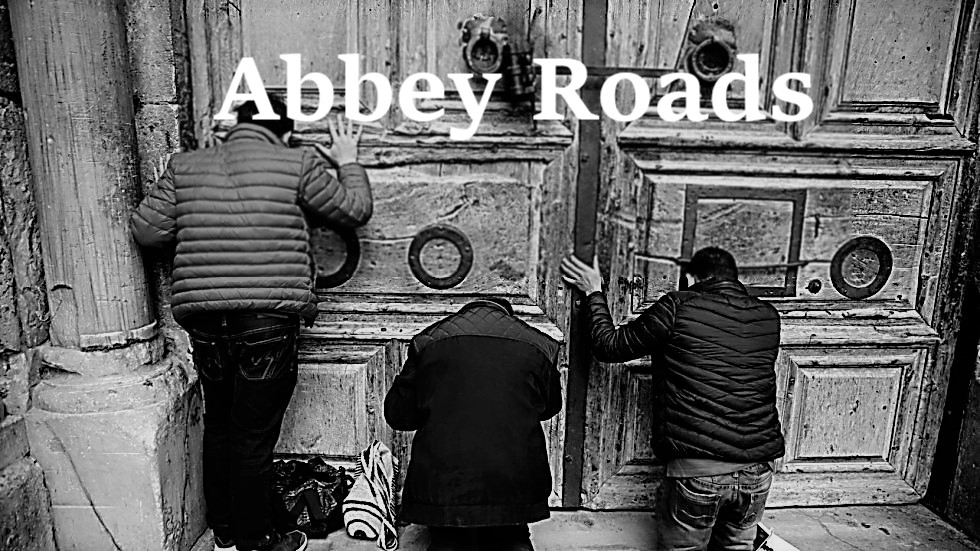Tuesday, January 18, 2011
Canon Law and Church Discipline and Clerics.
Clericus nec comam nutriat nec barbam.
.
Did you know Catholic priests were once forbidden to wear beards?
.
I know!
.
The legislation requiring the beard to be shaved seems to have remained in force throughout the Middle Ages. Thus an ordinance of the Council of Toulouse, in 1119, threatened with excommunication the clerics who "like a layman allowed hair and beard to grow", and Pope Alexander III ordained that clerics who nourished their hair and beard were to be shorn by their archdeacon, by force if necessary. This last decree was incorporated in the text of the canon law (Decretals of Gregory IX, III, tit. i, cap. vii). Durandus, finding mystical reasons for everything, according to his wont, tells us that "length of hair is symbolical of the multitude of sins. Hence clerics are directed to shave their beards; for the cutting of the hair of the beard, which is said to be nourished by the superfluous humours of the stomach, denotes that we ought to cut away the vices and sins which are a superfluous growth in us. Hence we shave our beards that we may seem purified by innocence and humility and that we may be like the angels who remain always in the bloom of youth." (Rationale, II, lib. XXXII.)
.
In spite of this, the phrase barbam nutrire which was classical in the matter, and was still used by the Fifth Council of Lateran (1512), always remained somewhat ambiguous. Consequently usage in the sixteenth century began to interpret the prohibition as not inconsistent with a short beard. There are still many ordinances of episcopal synods which deal with the subject, but the point upon which stress is laid is that the clergy "should not seem to be aping the fashions of military folk" or wearing flowing beards like goats (hircorum et caprarum more), or allowing the hair on their upper lip to impede their drinking of the chalice. This last has always been accounted a solid reason in favour of the practice of shaving. To judge by the portraits of the popes, it was with Clement VII (1523) that a distinct beard began to be worn, and many among his successors, for example Paul III, allowed the beard to grow to considerable length. St. Charles Borromeo attempted to check the spread of the new fashion, and in 1576 he addressed to his clergy a pastoral "De barbâ radendâ" exhorting them to observe the canons. Still, though the length of clerical beards decreased during the seventeenth century, it was not until its close that the example of the French court and the influence of Cardinal Orsini, Archbishop of Beneventum, contributed to bring about a return to the earlier usage. For the last 200 years there has been no change, and an attempt made by some of the clergy of Bavaria in 1865 to introduce the wearing of beards was rebuked by the Holy See.
.
As already noted, in Eastern lands a smooth face carries with it the suggestion of effeminacy. For this reason the clergy, whether Catholic or Schismatic, of the Oriental churches have always worn their beards. The same consideration, together with a regard for practical difficulties, has influenced the Roman authorities in according a similar privilege to missionaries, not only in the East but in other barbarous countries where the conveniences of civilization cannot be found. In the case of religious orders like the Capuchins and the Camaldolese Hermits the wearing of a beard is prescribed in their constitutions as a mark of austerity and penance. Individual priests who for medical or other reasons desire to exempt themselves from the law require the permission of their bishop. - Source
.
Oh! My! Gosh! Someone! Quick! Email Dr. Peters!
Subscribe to:
Post Comments (Atom)


When one studies the polemics of "the Great Schism," beards are on the lists. As was, of course, the kind of bread one used in communion. So much legalism gets in the way of charity. It's not that there are no good reasons for disciplines, but it can become problematic, when it is objectified and turned into something which must be defended as doctrinal instead of the tool it was intended to be.
ReplyDeleteAgreed - thanks Henry.
ReplyDeleteHi.
ReplyDeleteI am in a somewhat unusual position, and have been affected personally by this story.
My father is an ex-Anglican who converted when women were "ordained". He is now a Catholic priest. Since his ordination, four of my siblings have been born.
And he has a beard.
So this post has made me smile.
Hi Esther - Praised be Jesus Christ! I'm so pleased your father is a Catholic priest. God bless!
ReplyDeleteI like the guy "obviously, beards are symbolic of the number of sins"
ReplyDelete"Hey, bra, check out mah sin beard"
In all fairness I guess there as a time when beards were the facial equivalent of a codpiece, but
... Didn't Jesus have one?
I'd make a poor Eastern priest - I can't grow a beard.
ReplyDeleteYou'd be effeminate, in fact. Like John Wayne and Bruce Willis.
ReplyDeleteHey Terry: Where is Padre Nazareth? I miss him so much...
ReplyDeleteMaria - I miss him too.
ReplyDelete